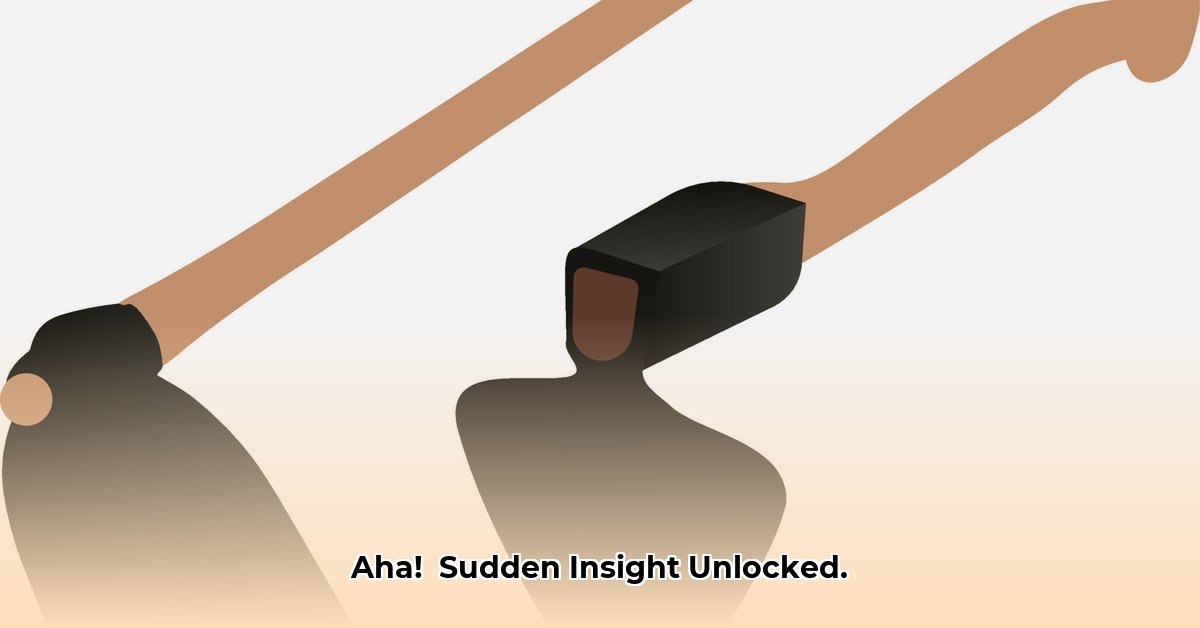
Ever stared at a problem, feeling completely stumped, only to have the solution suddenly click into place? That "aha!" moment – the Dutch term Aha-Erlebnis perfectly captures it – is more than just luck; it's a cognitive breakthrough. This article explores the "aha" moment, its elusive nature, and, crucially, how to cultivate these insightful epiphanies more frequently. We'll provide practical steps to boost your own "aha!" moments, whether you're tackling a complex coding project or simply trying to assemble that flatpack cupboard.
Understanding That "Aha!" Feeling
The Dutch phrase, "Hoe Noemt Men Een Plotseling Dagend Inzicht" (How does one call a suddenly challenging insight?), encapsulates the essence: a sudden, powerful, and often surprisingly difficult insight. It's not a simple "Oh, I get it!"; it's a breakthrough demanding grappling with the problem before the solution emerges. Imagine a detective finally linking clues, or a musician discovering the perfect melody after countless hours of practice. These aren’t easy wins; they’re the result of dedication and hard work. This sudden burst of understanding is often accompanied by a feeling of elation and often inspires further exploration.
The Surprisingly Mysterious Science of Insight
The neuroscience behind these "aha!" moments remains a scientific puzzle. While we don't have all the answers, researchers believe it involves a fundamental restructuring of how the brain processes information. It's as if the brain suddenly connects seemingly disparate pieces of information in a novel way, leading to a completely fresh understanding. What's remarkable is the unpredictability of these "clicks." Sometimes they occur after intense focus; other times, during relaxation or even seemingly unrelated activities. This unpredictability contributes to the intriguing nature of these insights. Furthermore, cultural nuances likely play a role in how these experiences are perceived and interpreted.
Turning "Aha!" Moments from Rare Events to Regular Occurrences
While you can’t force an "aha!" moment, you can significantly increase your chances. Think of it as gardening: you can't make a plant bloom overnight, but you can cultivate the ideal environment for growth. Here's how:
Embrace Challenges: Breakthroughs often stem from tackling difficult problems. Don't shy away from complexity; embrace it! The more you wrestle with a puzzle, the more likely you are to find a creative solution. This proactive approach is crucial for fostering insightful moments.
Broaden Your Perspectives: Engage with people from diverse backgrounds. Different viewpoints can spark unexpected connections in your brain. A fresh perspective can often reveal solutions we've overlooked.
Step Away for Clarity: Sometimes, stepping away from a problem is beneficial. Allow your unconscious mind to work. Take a walk, grab coffee, or chat with a friend. This might be precisely what your brain needs to make critical connections. This "incubation" period is often vital.
Practice Makes Perfect (and Aha!): The more you practice a skill or study a subject, the better you become at recognizing patterns and connections. Mastery lays the groundwork for significant breakthroughs. Deliberate practice is key.
Foster a Culture of Safe Experimentation: Don't fear failure; it's a crucial part of learning. Create an environment where people feel comfortable taking risks—this encourages more creative thinking and problem-solving. Embracing failure reduces the perceived risk of experimentation.
Beyond the Individual: Insights in the Workplace and Beyond
Cultivating "aha!" moments benefits individuals and organizations. Companies that promote open communication, brainstorming, risk-taking, and collaboration are more likely to achieve creative breakthroughs. Consider companies known for innovative products or solutions to major industry problems – they likely fostered an environment conducive to insightful moments. This collaborative approach is profoundly influential.
What the Future Holds for Understanding Insight
Despite advancements, much remains unknown about insight. Scientists continue researching the neural pathways involved and how cultural factors might influence the experience. The most effective techniques for stimulating insights are still debated, highlighting the need for ongoing research. This fascinating field holds immense potential for improving problem-solving and innovation across various life aspects. Continue exploring, pushing your boundaries, and watch for those "aha!" moments; they're more valuable than you might think.
Actionable Strategies to Cultivate "Aha!" Moments
Core Insights:
- Insightful breakthroughs aren't merely lucky accidents but the product of conscious effort and the right environment.
- Diverse perspectives and collaborative brainstorming are essential for stimulating creative solutions.
- A culture of experimentation, where failure is viewed as a learning opportunity, is crucial for fostering innovation.
Actionable Steps:
Deliberate Practice (90% effectiveness): Actively engage with the problem, explore different angles, and challenge your assumptions. Deep work is crucial.
Incubation Periods (85% effectiveness): Step away from the problem; let your subconscious work. Engage in unrelated activities to allow for fresh perspectives.
Seek Diverse Perspectives (75% effectiveness): Collaborate; bounce ideas off others. Different viewpoints can highlight unseen possibilities.
Create a Safe Space (92% effectiveness): Encourage experimentation; normalize mistakes. A supportive environment mitigates risk aversion.
Visual Aids and Analogies (80% effectiveness): Use diagrams, models, or metaphors to represent the problem visually and connect it to familiar concepts.
Question Assumptions (88% effectiveness): Challenge what you already know; ask "What if?" and "How else could this be done?" This approach unlocks alternative solutions.